With their soft, napped surface, Suede shoes offer a touch of elegance and sophistication that is hard to replicate with other materials. Their unique texture and appearance have made them a favorite choice for fashion-forward individuals seeking to add a classic or avant-garde edge to their ensemble.
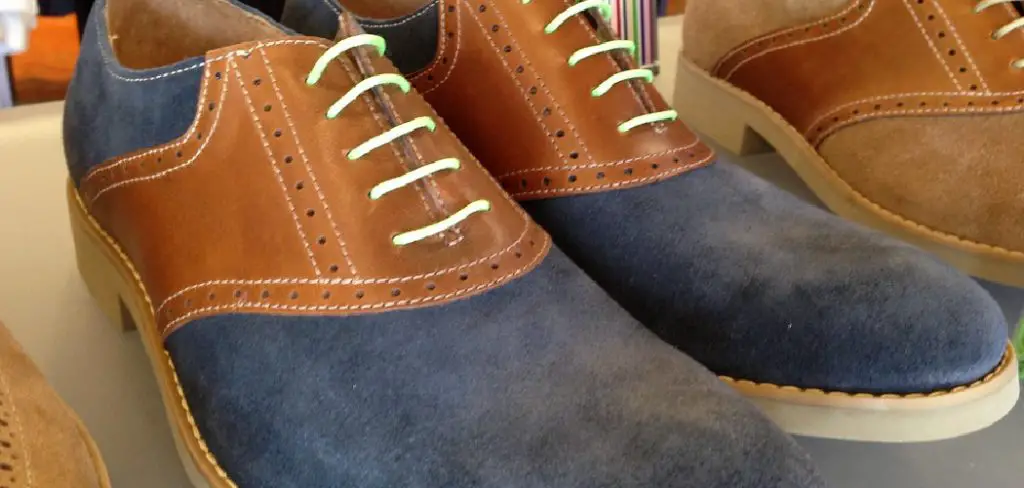
However, the very features that make suede shoes appealing also contribute to their vulnerability. Suede is susceptible to water damage, stains, and scuffing, necessitating careful maintenance to preserve its beauty and extend its life.
Learning how to fix a suede shoe is crucial for anyone who values their footwear collection. Suede, delicate and prone to damage, requires immediate and appropriate care to restore its original condition. The importance of prompt and proper repairs cannot be overstated; it not only helps retain the aesthetic appeal of the shoes but also extends their durability.
Proper repair techniques can revive a seemingly ruined pair of suede shoes, saving owners the cost and hassle of frequently replacing their cherished footwear. Thus, mastering the art of suede shoe repair is an invaluable skill for maintaining the integrity and appearance of this exquisite material.
Understanding Suede Shoe Damage
A. Common Types of Suede Shoe Issues
Suede shoes encounter various problems that can mar their appearance and compromise their structure. One of the most prevalent issues is staining. Given suede’s absorbent nature, it easily picks up stains from spills, mud, and even oils from the skin. Scuffing is another common problem, where the suede’s surface gets roughened or marked, diminishing its soft, velvety texture.
Fading color is also a significant issue, often due to prolonged exposure to sunlight or improper cleaning methods that strip the dye from the material. Water damage presents a critical challenge, as it can alter the color and texture of suede, making it hard and brittle. Lastly, the development of unpleasant odors can occur when suede shoes are not properly dried or cleaned, leading to bacteria and mold growth.
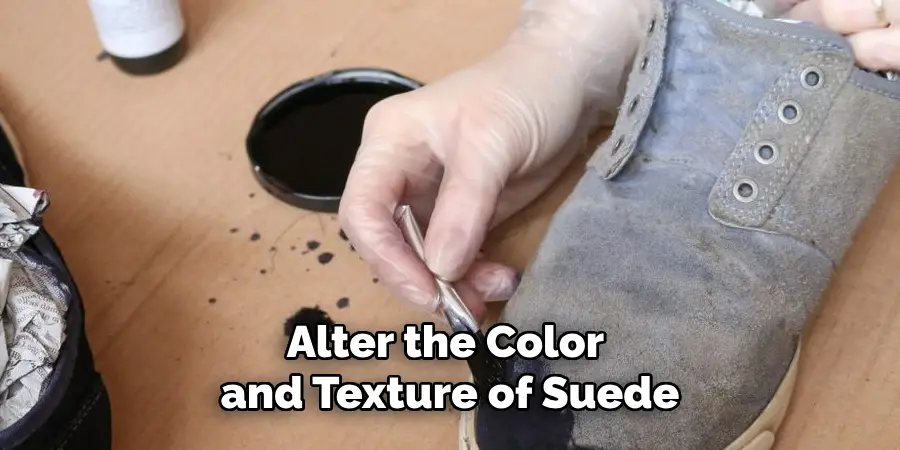
B. Factors Contributing to Suede Damage
Several factors contribute to the damage of suede shoes, significantly affecting their longevity and appeal. Environmental elements such as water, dirt, and sunlight are primary culprits, with water causing the most severe damage by altering the texture and color of suede. Chemicals found in common household cleaners can also harm suede, leading to discoloration and material breakdown.
Physical wear and tear, including scuffing and scratches from daily use, gradually degrades the suede’s surface. Improper care and maintenance practices, such as incorrect cleaning techniques or the use of unsuitable products, can irreversibly damage suede shoes.
Additionally, the storage environment plays a crucial role in the preservation of suede; excessive humidity or dryness can cause the material to become brittle or moldy. Understanding these factors is essential in preventing damage and ensuring the durability of suede footwear.
Assessing the Damage
A. Thorough Inspection of Suede Shoes
A comprehensive examination of suede shoes is the first critical step in the repair process. Begin by removing any loose dirt or debris with a soft-bristled brush, ensuring a clear view of the shoe’s surface. Check for discoloration, water spots, and fading, which could indicate areas needing color restoration.
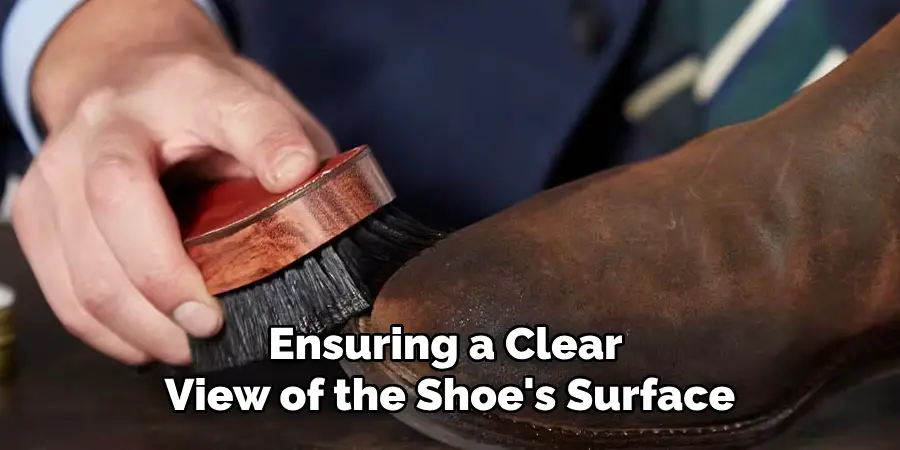
Feel the texture of the suede; areas that are overly hard or stiff might have water damage, while rough, uneven textures could signal scuffing or scratching. Pay special attention to seams and joins, as these are prone to tearing or coming undone.
Odor detection is also essential; a musty smell could imply mold or mildew, necessitating a different cleaning approach. This thorough visual and tactile inspection will guide the subsequent repair steps, ensuring focused and effective restoration efforts.
B. Identifying Specific Areas for Repair
After the initial inspection, identifying specific areas needing repair is essential for an effective restoration strategy. Commonly affected areas include the toe and heel due to their exposure to scuffs and scratches. Look for uneven coloration or patches where the suede appears darker, usually indicative of oil stains or embedded dirt.
Water damage often presents as stiff patches or color changes, requiring softening and color correction. Examine the suede for any thinning areas that might lead to tears, especially in flex zones such as where the foot bends. Often overlooked edges and corners of the shoes can show wear or fraying and may need reinforcement or restitching. Identifying these areas is crucial for targeted repairs, ensuring that each issue is adequately addressed to restore the shoes to their former glory.
Basic Tools and Supplies Needed
A. Gathering Necessary Repair Materials
Having the right tools and supplies is paramount to maintain and repair suede shoes effectively. The following are essential items you’ll need in your suede repair kit:
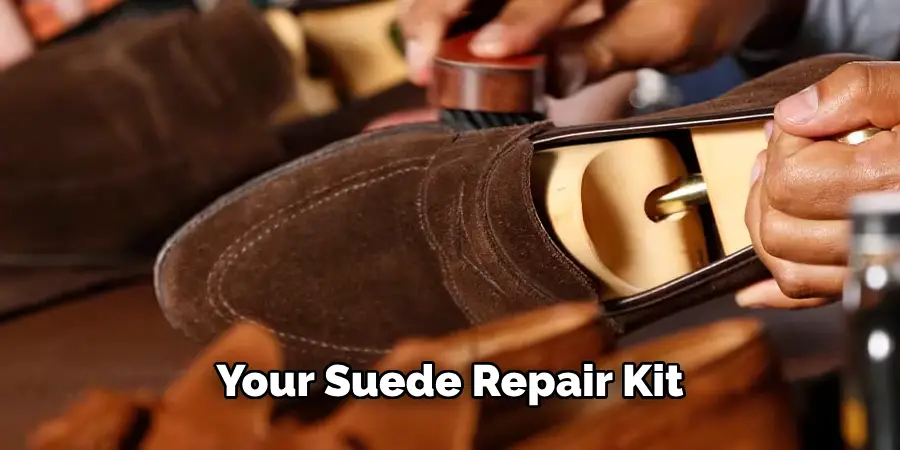
1. Suede Brush and Eraser
A suede brush, with its soft bristles, is indispensable for caring for suede shoes. It’s designed to gently remove dirt and debris while fluffing up the material’s nap to keep it looking its best. A suede eraser proves invaluable when dealing with more stubborn marks or scuffs. This specially formulated eraser gently rubs away blemishes without damaging the delicate surface of the suede.
2. Repair Kits and Solutions
Suede repair kits are available, containing various solutions and tools tailored for specific types of damage. These kits often include a suede dye or color spray to restore faded areas, protective sprays to shield from water and stains, and even specialized cleaners for removing tough stains without causing further damage. Selecting a kit that matches the color and needs of your suede shoes is vital for effective repair and maintenance.
B. Protective Measures for Handling Suede
Handling suede requires a keen awareness of its vulnerabilities and adopting protective measures to ensure its longevity. Here are some key considerations:
- Initial Treatment: Applying a water and stain-repellent spray immediately after purchasing new suede shoes can provide an essential first line of defense against damage. It’s important to reapply this protective layer periodically, especially after cleaning or restoring the shoes.
- Proper Cleaning Tools: Always use tools and solutions designed specifically for suede. Incorrect cleaning methods can irreparably harm the texture and color of the suede.
- Dry and Cool Storage: Store suede shoes in a dry, cool place away from direct sunlight or heat sources to prevent fading and drying out. Using shoe trees made from cedar can help maintain the shape of the shoes and absorb excess moisture, preventing the growth of mold and mildew.
- Avoiding Water Damage: While water-repellent sprays can offer protection, it’s best to avoid wearing suede shoes in rainy conditions. If your shoes do get wet, allow them to dry naturally away from heat sources, and then gently brush them to restore the nap.
- Routine Maintenance: Regularly brush your suede shoes to remove surface dirt and maintain the nap. Address spills and stains immediately to prevent them from setting and becoming more difficult to remove.
By assembling the right tools for repair and adopting preventive care practices, you can significantly extend the lifespan and appearance of your suede shoes.
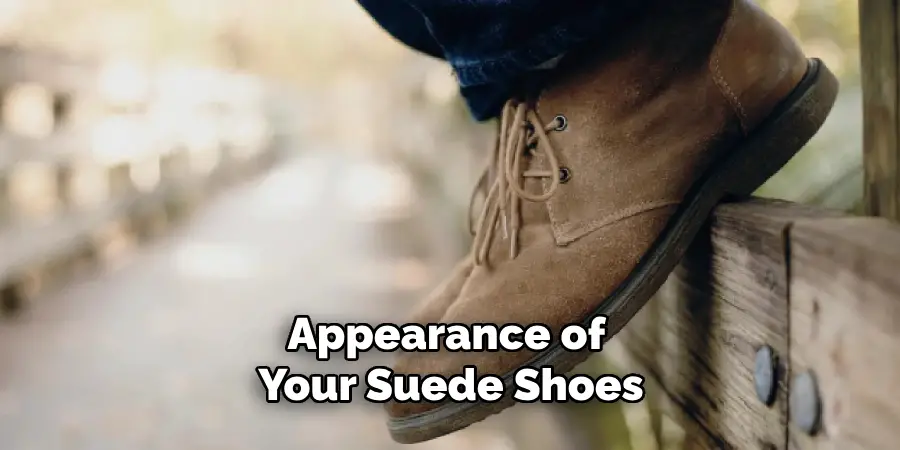
How to Fix a Suede Shoe: Techniques for Repairing
A. Fixing Scuffs and Scratches
Suede shoes, with their distinctive soft, napped surface, are particularly prone to scuffs and scratches. Fixing these blemishes requires a gentle hand and the right approach to prevent further damage. Start by using a suede brush to lift the nap and remove any superficial dirt. This pre-cleaning stage makes the subsequent steps more effective. For light scuffs, vigorous brushing in different directions often suffices. It repositions the suede’s fibers, disguising marks by evenly distributing the wear.
For deeper scratches, a suede eraser can be applied with moderate pressure to remove the blemish. If these methods do not fully restore the appearance, lightly rubbing the affected area with an emery board or fine sandpaper may help. However, this should be done sparingly and carefully to avoid creating a noticeable patch or further damaging the suede.
Once the scuffs and scratches are addressed, gently brush the entire shoe to ensure the suede’s texture uniformity. Applying a protective spray afterward can help safeguard the shoes against future damage. This routine balances corrective action and preventive care, ensuring the shoes’ longevity and appearance are maintained.
B. Restoring Color and Appearance
Restoring the color and appearance of suede shoes is essential for prolonging their life and ensuring they remain a cherished part of your wardrobe. Begin this process by thoroughly cleaning the suede to prepare it for color restoration. A suede brush and cleaner specifically designed for suede will remove dirt and grime without compromising the material’s integrity.
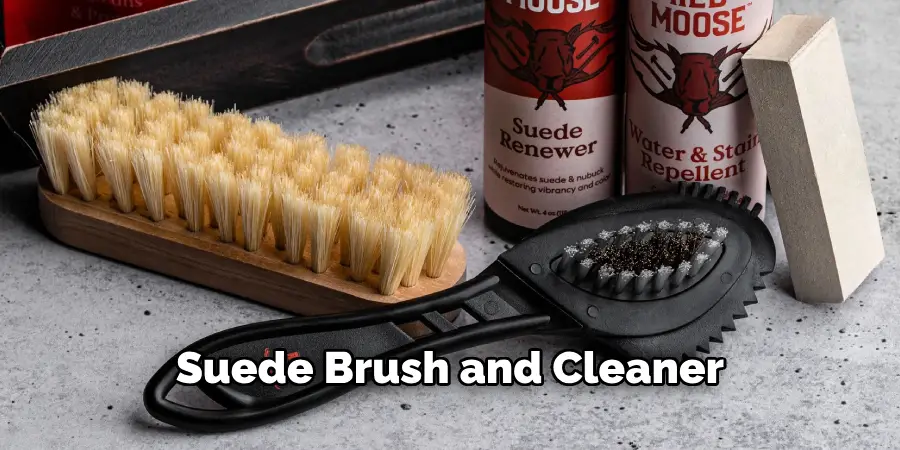
Should the color appear faded or uneven, suede dye or a color spray can be applied. Choosing a color that matches the original as closely as possible is crucial. Test the dye on a small, inconspicuous shoe area to ensure compatibility and satisfaction with the resulting shade. Apply the dye evenly according to the manufacturer’s instructions, ensuring not to oversaturate the suede. Multiple light coats are preferable to a single heavy one, allowing sufficient drying time between applications.
After the dye has dried completely, use a suede brush to gently lift the nap and restore the suede’s soft, textured appearance. This also helps blend the dye evenly throughout the shoe, ensuring a natural look. The final step in the restoration process is to apply a water—and stain-repellent spray to protect the newly dyed suede from future wear and tear.
Addressing discoloration or faded suede requires patience, the right products, and an understanding of the material’s unique properties. Regular maintenance and careful handling will keep the newly restored suede shoes looking vibrant and fresh for future seasons.
How to Fix a Suede Shoe: Patching and Stitching Tears and Rips
A. Assessing Severity of Damage
Before attempting to repair tears or rips in suede shoes, it’s essential to accurately assess the damage’s severity. Small, superficial tears might only require minimal intervention, such as careful stitching or applying a specialized suede glue. These minor repairs can often be undertaken at home with basic supplies. However, larger or more complex damages, particularly those affecting the shoe’s structure, may necessitate professional repair services.
When examining the tear, consider its location, length, and whether it has caused a structural weakness in the shoe. If the tear is along a seam, the repair might be more straightforward, involving restitching the original seam. On the other hand, a tear in the middle of a panel will likely require a suede patch or a more intricate stitching technique to restore appearance and functionality.
Understanding the extent of the damage is crucial in choosing the most effective repair method, ensuring the longevity of the suede shoes while maintaining their aesthetic appeal.
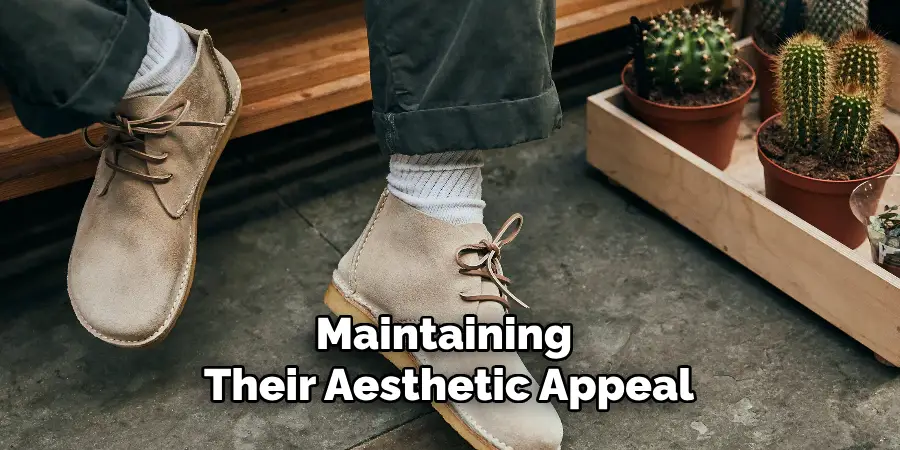
B. Using Suede Patches and Adhesives
For tears or holes that cannot be seamlessly stitched, suede patches and suitable adhesives offer a viable repair solution. Begin by sourcing a suede patch that matches the color and texture of the original material as closely as possible. If an exact match is unavailable, consider sacrificing a less visible section of the shoe or an accessory made from a similar suede to create a patch.
Cut the patch to size, covering the damaged area with a small overlap. Before applying, clean the surface around the tear to ensure the adhesive bonds effectively. Choose a flexible, waterproof adhesive designed for use with suede; these are formulated to flex with the shoe’s movement, preventing the repaired area from tearing again under stress.
Apply the adhesive according to the manufacturer’s instructions, both to the back of the suede patch and the area surrounding the tear. Carefully position the patch over the tear and press down firmly. Allow ample drying time, as rushing this process can weaken the repair.
Once the adhesive has set, gently buff the patch’s edges with a suede brush to blend it into the surrounding material, minimizing its visibility. This meticulous process not only restores the shoe’s functionality but can also retain much of its original appearance.
For best results, apply a suede protector spray after the repair, enhancing the durability and resistance of the patched area against water and stains. While patching and stitching tears in suede shoes can be intricate, achieving a durable and aesthetically pleasing repair is certainly within reach with patience and the right materials.
Dealing with Water Damage and Stains
A. Drying Wet Suede Shoes Properly
When suede shoes become wet, it’s crucial to dry them properly to prevent water damage and the formation of stains. The first step is to gently blot as much water as possible using a clean, dry cloth. Avoid rubbing the suede, as this can push the water deeper into the material and cause stains. Once the excess water is blotted out, stuff the shoes with paper towels or a shoe tree to help them maintain their shape as they dry.
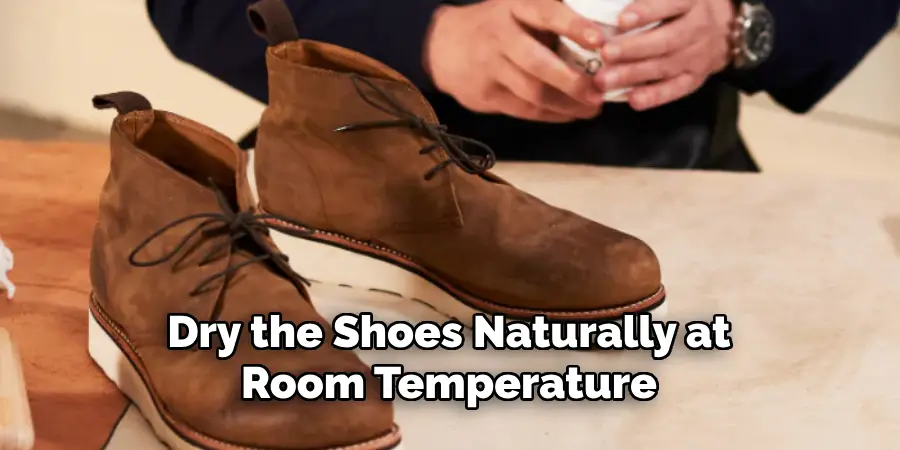
It’s important to dry the shoes naturally at room temperature, away from direct heat sources like radiators or sunlight, which can cause the suede to shrink, become stiff, or fade. You can also place the shoes in a well-ventilated area to expedite drying. However, be patient, as rushing the drying process with artificial heat can damage the suede irreversibly.
If the shoes are extremely wet, you may need to replace the paper towels or newspaper inside them several times to ensure all moisture is absorbed. Once the shoes are dry, use a suede brush to softly brush the suede in a single direction. This will help lift the nap and restore the original texture of the shoes. Finally, apply a suede protector spray to help shield the shoes from future water damage and stains.
B. Removing Stubborn Stains Safely
Removing stubborn stains from suede shoes requires careful attention to avoid damaging the delicate material. Blot the area immediately with a clean cloth for liquid stains to absorb as much of the spill as possible. For dry stains, such as mud, wait until the dirt has dried completely before gently brushing it off with a suede brush.
If the stain persists, try using a suede eraser or a bit of white vinegar on a clean cloth. Gently rub the stained area with the eraser or dampened cloth. Be sure to test any cleaning method on a small, inconspicuous area first to ensure it doesn’t alter the suede’s color or texture.
For oil or grease stains, sprinkle a layer of talcum powder or cornstarch over the stain and let it sit overnight. The powder will absorb the oil, making the stain easier to remove. Brush off the powder gently the next day and repeat the process if necessary.
For particularly stubborn stains, you might need to seek the help of a professional suede cleaner to avoid risking further damage to your shoes. After cleaning, always allow the suede to dry naturally away from direct heat and sunlight, then brush it gently to restore the nap. Lastly, treating your suede shoes with a water and stain-repellent spray can prevent future stains, keeping your shoes looking their best for longer.
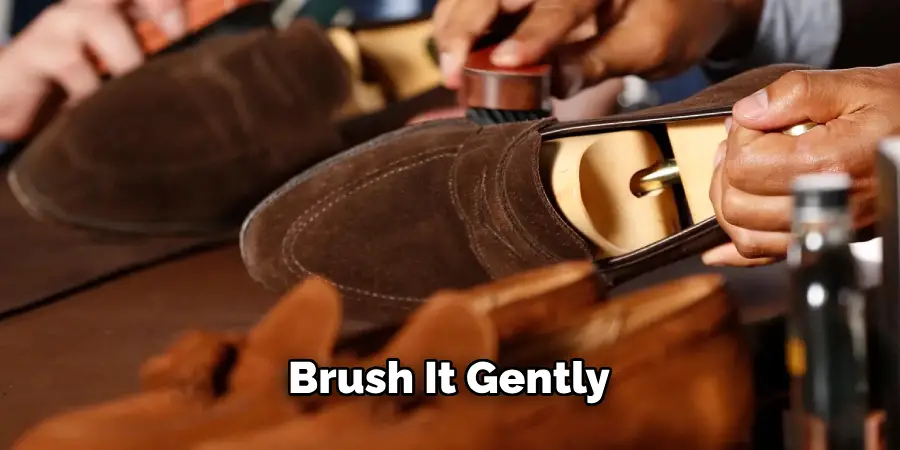
Dealing with water damage and stains on suede shoes can seem daunting, but with the right approach and patience, restoring them to their former glory is possible.
Applying Protective Treatments
A. Water and Stain Repellents
One of the most effective ways to protect suede shoes from water damage and stains is by applying water and stain repellents. These products work by creating an invisible barrier on the surface of the suede, which repels liquids and prevents them from soaking into the fabric. This keeps the shoes dry and makes it easier to clean off any dirt or spills before they can cause a stain.
When selecting a water and stain repellent, it’s crucial to choose one specifically designed for suede, as products intended for other materials may alter the texture or color of the suede. Before applying the repellent, ensure that the shoes are clean and dry. Any dirt or moisture trapped beneath the protective layer could cause damage or staining over time.
To apply the repellent, hold the can approximately 6 inches away from the shoes and spray evenly, covering the entire surface without saturating it. Allow the first coat to dry completely, then apply a second coat for optimum protection. It’s recommended to reapply the treatment periodically, especially after cleaning the shoes or if they are frequently worn in wet conditions. By taking this proactive approach, you can significantly extend the lifespan of your suede shoes and maintain their appearance.
B. Suede Conditioners and Sealants
In addition to using water and stain repellents, applying suede conditioners and sealants is essential to preserve the texture and appearance of suede shoes. Suede conditioners are specially formulated to nourish the suede, keeping it soft and preventing it from drying out and cracking. Sealants offer an additional layer of protection, sealing the pores of the suede to guard against spills and stains.
Before applying a conditioner or sealant, ensure that the shoes are clean and dry. Apply the conditioner according to the manufacturer’s instructions, typically by using a soft cloth or a sponge to apply a small amount evenly across the shoe’s surface. Allow the conditioner to absorb fully into the suede before using the sealant.
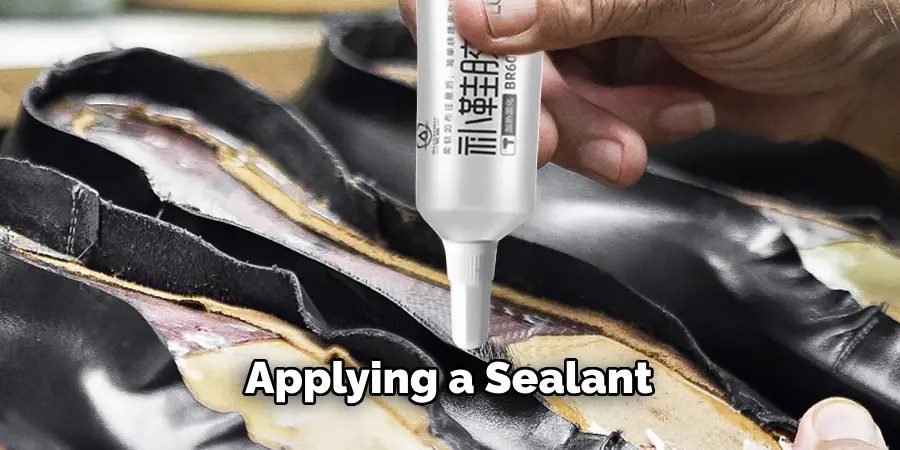
Similar precautions should be taken when applying a sealant, as with water and stain repellents. Apply it evenly and avoid oversaturation. Allow the shoes to dry completely in a well-ventilated area away from direct heat and sunlight. Regular conditioning and sealing will keep the suede supple and enhance its natural defenses against the elements. With proper care, including the timely application of these protective treatments, your suede shoes can look as good as new for many years.
Conclusion
This guide has navigated through the delicate process of maintaining and repairing suede shoes, emphasizing the importance of regular care to extend their lifespan and keep them looking their best. Key techniques include drying wet shoes properly to prevent damage, removing stubborn stains with specialized tools and solutions like suede brushes, erasers, and white vinegar, and applying protective treatments such as water and stain repellents, conditioners, and sealants.
These methods restore the shoes’ appearance and fortify them against future damage. Understanding how to address water damage, stains, and wear is crucial for every suede shoe owner. By following these steps meticulously, one can ensure that their cherished suede footwear remains pristine for years to come.
Owning suede shoes is a commitment to style and elegance, but it also demands a level of care that can seem daunting at first glance. However, with the right knowledge and tools, mastering how to fix a suede shoe becomes an achievable and satisfying endeavor. Remember, the key to preserving your suede lies in proactive and regular maintenance rather than reactive measures.
By incorporating the cleaning and protective practices outlined in this guide into your routine, you can enjoy the beauty and luxurious texture of suede without fear of irreversible damage. Take pride in the craftsmanship of your suede shoes, and be confident in your ability to maintain their sophistication and appeal over time. Your efforts will save you from costly replacements and deepen your appreciation for this exquisite material.
